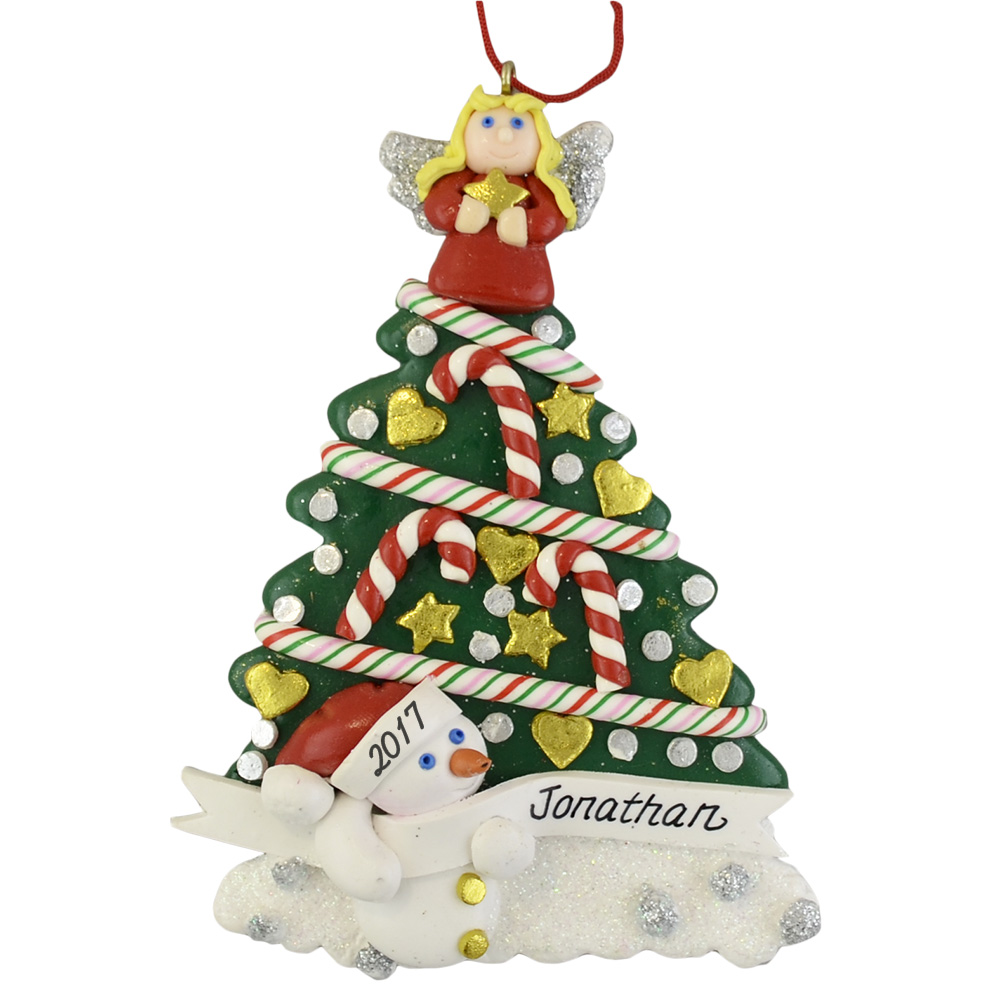
We started our family-owned business back in 1971, making and selling “dough” ornaments at local crafts fairs, especially the popular Dickens Christmas Faire in San Francisco. The dough ornaments were novel and cute, and everyone loved our imaginative creations, but one thing about them….. they were heavy! Of course, in 1971 there were few artificial trees available, but as the years passed these trees became more popular for a variety of reasons, and for us, it was that they were able to hold the heavier ornaments.
Now our ornaments are made from polymer clay and are quite lightweight averaging about 2 oz per ornament. Here’s an interesting article on the discussion: Are real Christmas trees better for the earth than artificial ones?
Friday, December 07, 2012 by David Gutierrez, staff writer of www.naturalnews.com
Should You Buy a Real or Fake Tree?
Environmentalists for whom Christmas trees are an important tradition face a dilemma: should they buy a real or an artificial tree? Well, according to plant biologist Clint Springer of Saint Joseph’s University in Philadelphia, buying a single artificial tree once a decade has a significantly larger carbon footprint than buying a new real tree each year over the same time period.
“At this time of year, choosing a real Christmas tree is one way that an average person can make a difference in terms of climate change,” Springer said.
According to Nielsen Research, in partnership with the American Christmas Tree Association (an industry trade group for artificial trees), U.S. consumers will purchase approximately 21.6 million real trees and 12.9 million artificial trees during the 2012 Christmas season. The National Christmas Tree Association, a trade group for real trees, reports the purchase of 28 million real trees and 8.2 million artificial trees in 2010.
Selecting a greener tree
Reviewing the research on the two types of trees, Springer notes that you would have to keep an artificial tree for 20 years before its carbon footprint is smaller than that of 20 real trees. These numbers come from a 2009 study conducted by the consulting firm Ellipsos.
“[The] study … concluded that a seven-foot cut tree’s impact on climate is 60 percent less than a seven-foot artificial tree used for six years. So while cut trees are not carbon-neutral, in terms of carbon-use, they are better than artificial trees.”
Artificial trees’ carbon footprints come in large part from the fact that most of them are made in China, and therefore, shipping them around the world consumes enormous quantities of fossil fuels. In addition, said Ellipsos founder Jean-Sebastien Trudel, artificial trees are usually constructed from polyvinyl chloride. This plastic is manufactured from petrochemicals in a fossil-fuel intensive process. In addition, trees made from polyvinyl chloride tend to release volatile organic compounds into the air, often causing respiratory allergies or other distress.
According to Springer, many people select artificial trees for reasons that have more to do with price or accessibility than global warming. But many other people, he noted, falsely fear that real trees will give them allergies.
“Ultimately, people need to make the choice that makes the most sense for their family,” he said, “but they should keep in mind that real Christmas trees do not trigger allergic reactions. Farm-raised trees are too young to be reproductive in most cases, so pollen is not an issue.”
He noted that some people might be sensitive to a real tree’s natural scent. In such cases, he recommends pine trees rather than firs, due to pine’s weaker scent.
The concern that real Christmas trees get moldy is also exaggerated, he said.
“From what we know about household allergens like mold spores, a house with a real tree does not usually show a higher rate of indoor air pollution than a house with an artificial tree, because mold spores found on live trees do not usually become air-borne,” Springer said.
Learn more: https://www.naturalnews.com/038250_Christmas_trees_artificial_environmental_impact.html#ixzz2ULkNLGiV
